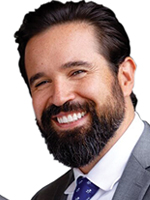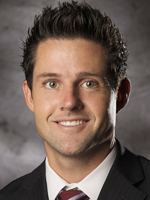Premises-liability voir dire
Establishing connections with potential jurors to learn their attitudes towards slip-and-fall cases
There can be no doubt that trying premises cases is a challenge – and in a COVID world it will be even more difficult. This is because supermarkets and their employees are being lauded as heroes now more than ever. In addition, small businesses appear to have suffered the gravest economic losses. And let us not forget that during the toilet paper shortage, many Americans opted to use their jury summonses as an appropriate replacement. Getting the right jurors on your case will thus be of the utmost importance. It will take more than a great COVID joke to get the right panel. Here we will discuss mini-openings, overcoming slip-and-fall bias, winning challenges for cause, and discussing money damages during voir dire.
“They said a mask and gloves were enough to go to the supermarket. They lied. Everyone had clothes on.”
It starts with your mini-opening – don’t overplay it
We all know you never get a second chance to make a first impression. Your mini-opening will be the first moment that you get to speak to the jury and introduce them to your case. Don’t waste it. It is an invaluable tool you can use to orient the jury to the facts of your case, begin laying out key themes, and gain their credibility.
Code of Civil Procedure section 222.5 sets forth the ground rules for what is permitted during jury selection. Of particular importance is part (d) which provides that “[u]pon the request of a party, the trial judge shall allow a brief opening statement by counsel for each party prior to the commencement of the oral questioning phase of the voir dire process.” The key word to remember here is shall.
In a trip-and-fall case I tried earlier this year, defense counsel objected when I asked for a mini-opening. He argued that it would be an unnecessary waste of time. Too bad. Regardless of opposing counsel’s desire to interfere with the manner in which you put on your case, you are entitled to a mini-opening, and must take advantage of section 222.5.
While it is essential to use this opportunity to introduce important facts and themes of your case, of even greater importance is uncovering juror bias. A mini-opening that is too persuasive and compelling can quickly backfire by inhibiting your ability to get the best possible jury. In fact, it can cause potential jurors to choose sides very quickly, dig their heels in, and refuse to exercise an open mind. These jurors will be readily apparent to defense counsel and will be the first to get kicked off for cause.
Instead, take a more neutral tone, and be sure to lay out the bad facts of your case so that you have an opportunity to see how jurors react and feel about those issues. This includes potentially controversial issues such as prior falls, pre-existing conditions, attorney-referred treatment, and comparative negligence. Don’t shy away from this – own it. These facts are going to come out at some point, and you gain credibility if the jury hears them from you first. In every mini-opening, I tell the jury: “We all have certain biases. And that is OK. So if there is something that bothers you after you hear these mini-opening statements, let us know. Both sides just want a fair shot in this case.” I then lay out key facts and themes, and touch on each controversial issue. Above all, keep these mini-openings simple and to the point. Don’t overpromise, and you’ll have the jury’s trust moving forward.
Overcoming slip-and-fall bias
Anyone who has tried a slip-and-fall case has seen the almost-instant eye roll from jurors the moment you say your client fell. No problem. Slip-and-fall cases are very polarizing, and while many jurors may hate your case, just as many jurors will be on your side – you just have to find them. Your goal should be to establish a genuine connection with the potential jurors early so that they trust you and feel comfortable enough to be honest with you and reveal their actual attitudes toward slip-and-fall cases.
The following are examples of some of the questions I use in a slip-and-fall voir dire:
If you see in the news tomorrow that someone is suing for injuries from a slip and fall, what is your reaction?
Is anyone’s first reaction to hearing “slip and fall,” this is probably a frivolous lawsuit?
Some people feel that when a person slips and falls, they probably did something wrong. Anyone hear any truth in that?
Does anyone feel that the person who fell always shares some of the blame?
Anyone here think companies should make their property safe for customers?
Anyone here work for a company that had safety policies and rules? Did any of those rules seem too strict?
One of my favorite questions to ask in a slip-and-fall case came from the very talented Claire Plotkin. It is a question I will forever use going forward: What quality do you feel is most missing from society? At first glance, the question seems a bit odd. But the responses you get from this one question can tell you everything you need to know about a potential juror. Anytime a juror responds “personal responsibility” (or something close to that) alarm bells should go off in your head. Often these jurors won’t exactly be “plaintiff friendly.” Whereas when you hear responses such as “compassion,” or “love” you may have found a juror who will be in your corner moving forward.
Winning challenges for cause
Challenges for cause start with the defense
Unlike peremptory challenges that start with the plaintiff, challenges for cause must begin with the defense. Code of Civil Procedure, section 226, subdivision (d) provides, “all challenges to an individual except peremptory challenges, shall be taken, first by the defendants, and then by the people or the plaintiffs.” Don’t let experienced defense attorneys make you think you must go first.
This process is advantageous for plaintiffs for several reasons. First, defense counsel may have challenges for cause that you agree to, which you can use as an opportunity to gain credibility with the judge. You gain credibility with your judge when you are able to demonstrate that you are able to see things for what they are and can play the game fairly. What is good for the goose is good for the gander, to speak in American idiom. This is also an opportunity for you to get a preview of which juror the defense may use their peremptory challenge on if their cause challenge is denied.
A promise is not enough
A lot of times, out of sheer frustration, a judge will begin brow-beating your honest, candid juror into telling everyone they can put their biases aside and become a fair and impartial juror. If there is ever a cringe moment for an attorney during trial, it is when this occurs. When this happens, you must tell your judge that despite their best efforts, the jurors’ beliefs cannot be so easily set aside.
The strongest case on this issue is Lombardi v. California Street Ry. Co. (1899) 124 Cal. 311, 314, which holds that once a prospective juror has admitted bias, that prospective juror cannot be rehabilitated simply by stating, “I can be fair,” or “I will follow the law.” Prospective jurors are properly excluded for cause where prospective jurors admit bias but then promise to be impartial or to decide the case according to the evidence presented. (Ibid.)
In Liebman v. Curtis (1955) 138 Cal.App.2d 222, 226, a personal injury action, a prospective juror had considerable experience with the type of injury at issue. The prospective juror’s pre-conceived ideas regarding the types of injuries were sufficient to exclude the prospective juror for cause. (Ibid.)
Make these jurors say you are starting at a disadvantage
You must get a clear statement from a prospective juror that given his/her beliefs, the plaintiff is starting at a disadvantage. In Fitts v. Southern Pac. Co. (1906) 149 Cal. 310, 313, an action against the railroad, a prospective juror felt many damage suits against the railroad were the fault of the injured parties instead of the railroad. The prospective juror was properly disqualified for cause. (Ibid.)
How to win cause challenges on jurors that will place comparative negligence on your client
You can anticipate the usual defenses in a slip-and-fall or trip-and-fall case. More often than not, defense counsel will argue that the dangerous condition was open and obvious and it was your client’s fault for ignoring it. You must address this issue during voir dire by asking the following:
“How many of you feel that if someone has a slip and fall/trip and fall, then that person must be at least partially at fault no matter what the evidence shows?”
*Juror raises their hand*
“Tell me more about that.”
*Juror discusses their opinion or belief*
“In a race, everyone gets to start on the same line. If this were a race, would it be safe to say because you feel that way, plaintiff is starting behind the defense? In other words, plaintiff is presenting his/her case behind the starting line and therefore, behind the defense?”
*Juror agrees*
“And Juror No. ____, is it fair to say that in spite of your best efforts to push these feelings aside, what you just stated was your honest and best answer and the truth of the matter?”
“And so we’d be hard pressed to convince you otherwise – that Mr./Ms. X had no fault in the matter?”
*Juror agrees*
“There’s nothing I could say, defense counsel could say or his/her honor could say to make you change your mind about that, right?”
*Juror concurs*
“Thank you for your honesty. How many of the rest of you feel like Juror No. ____?”
Discussing money and damages
During voir dire, all parties are entitled to engage in a “liberal and probing examination calculated to discover bias or prejudice with regard to the circumstances of the particular case.” (Code Civ. Proc., § 222.5). The form and subject matter of questions can be based on any element of the case. It is used to show “responses or conduct of jurors which may evince attitudes inconsistent with suitability to serve as a fair and impartial juror in the particular case.” (Ibid.) As a consequence, responses by jurors indicating bias or prejudice lead to cause challenges.
A “liberal and probing” voir dire in a premises-liability case requires a plaintiff’s attorney to ask potential jurors:
“If the evidence in this case justifies it, will you be able return a verdict for $9 million?”
Many jurors may say “no,” triggering bias against plaintiff – which he/she is entitled to know about. This liberal questioning allows plaintiff to probe, triggering frank interactions. Plaintiff must not learn of the jurors’ attitudes to award money after a verdict is read. Rather, learn jurors’ attitudes to award money before they are selected.
Many of our cases go to trial only on the element of damages, thus money is the central issue of the case. A plaintiff has a right to determine if jurors are unwilling to award a specific sum of damages if the evidence supports it. Thus, it is imperative that we ask the potential jurors if they have a cap on the amount of money they would be able to award regardless of the evidence. I often ask the following questions in voir dire:
If you see in the news tomorrow that a jury awarded a person $10 million dollars for pain and suffering, what is your reaction?
Do you have in your mind a cap or upper limit that you would be willing to award regardless of what the evidence shows?
Is there an amount of money that you wouldn’t go over no matter what?
Without hearing any evidence, does anyone have a problem awarding $___ million?
If you have a second chair trying the case with you, it is essential that they write down jurors’ responses to these questions word for word so that you can get them dismissed for cause. Often the judge doesn’t remember exactly what the juror said, and being able to show him the exact quote can make all the difference.
Conclusion
Like anything in life, voir dire is a skill that must be honed over time. Hopefully the right combination of the tools presented in this article, and your own unique personality and talents will have you on the right track to many favorable juries going forward.
Robert T. Simon

Robert T. Simon is co-founder of the Simon Law Group and acts as the primary trial attorney. He is a proud member of ABOTA, CAALA, CAOC, CASD and OCTLA, is a past president and active board member of Los Angeles Trial Lawyers’ Charities.
Sophie Etemadi

Sophie Etemadi is an associate at Cheong, Denove, Rowell and Bennett. Sophie’s practice focuses on medical malpractice and personal injury. When she isn’t appearing in court she enjoys performing stand-up comedy and doing improv at the Pack Theater in Los Angeles.
Eric Bell

Eric Bell is an attorney at Engstrom, Lipscomb and Lack in Los Angeles. His practice areas include: complex business litigation, labor and employment law, insurance bad faith, personal injury and wildfire litigation. Mr. Bell may be reached at (310) 552-3800 or ebell@elllaw.com.
Copyright ©
2026
by the author.
For reprint permission, contact the publisher: Advocate Magazine
